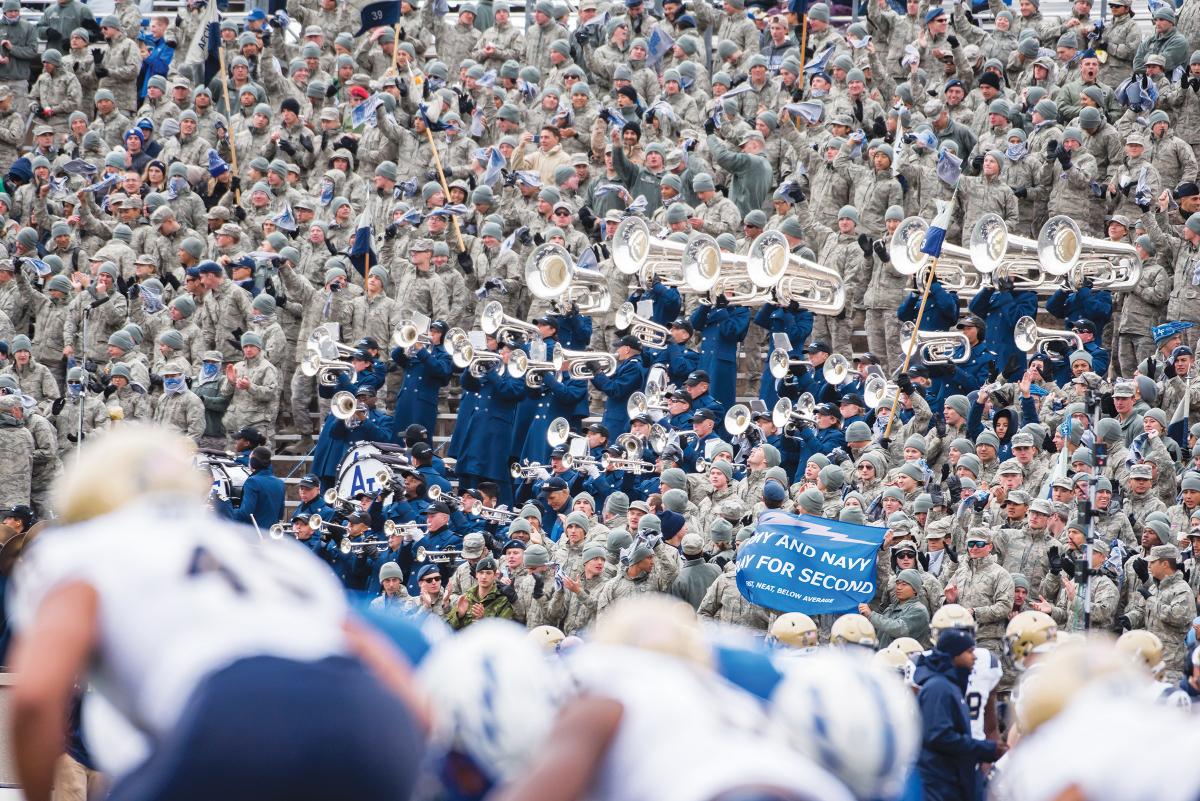The military is replete with seemingly insignificant but pervasive mechanisms of discipline; most visibly a sharp uniform. As a plebe at the U.S. Naval Academy three decades ago, I was assigned to read several books written by James Webb. One of the most memorable passages is of a Vietnam-experienced Marine officer instructor reflecting at length on his daily transformation from tactical garb while training on the muddy “endurance course” to an immaculately maintained service uniform for his day of leading midshipmen. Clearly Webb, a member of the Military Order of the Purple Heart, found it important to emphasize this aspect of the character’s essence.
During my own transformation to military life I obsessed about the cleanliness of my white uniform and white shoes, whether my cover was on or off at the proper times, and whether my room was “squared away” and my rifle properly secured. Twenty years later I found myself patrolling a combat zone wearing a more theater-appropriate utility uniform that included body armor, a Kevlar helmet, and a loaded assault weapon.
We wear uniforms of many types, from combat utilities to full dress parade uniforms, for several reasons, but perhaps chief among them, other than appropriate function, is to remind us of our civility while mandating the discipline of uniformity. No one with the power to unleash weapons should lack the discipline to don a properly maintained noncombat uniform.
The 1957 Cary Grant movie Kiss Them for Me involves three war-weary naval aviators on leave in San Francisco during World War II. Despite struggling with the juxtaposition of their current occupation with their respite from it, they were all in dress blues, wearing ties, but still managing to enjoy themselves. In naval aviation history, perhaps no squadron has more respect than Torpedo Squadron 8, only three members of which survived the Battle of Midway in 1942. The now famous Life magazine picture of the brave men shows ties clearly were not always anathema to aviators.
As a retired officer with three combat-zone deployments in the service of my nation, I know the necessity of combat utilities. Since 9/11, however, entire armed services have shifted to wearing tactical uniforms in the most benign desk jobs. The Navy announced a few years ago it would abandon a utility uniform known within the ranks as “blueberries,” a navy blue version of the ubiquitous tactical camouflage trouser and blouse with combat boots. Chosen instead was a similar woodland scheme with the same intent—a tactical uniform meant to be worn in a combat zone. In the press release, it was announced as “the standard shore duty uniform across the service.”
Lost on seemingly everyone was the implication that combat garb is apparently now a standard uniform on U.S. soil. At the 2018 Navy vs. Air Force football game, the Air Force Academy cadets were all dressed in the airman battle uniform (ABU), obviously intended as a combat uniform, in Colorado. A previous Chief of Staff of the Army once appeared on a Sunday news show wearing the Army combat uniform (ACU), and it has become commonplace to see military members wearing flight suits on the Metro subway in Washington, D.C., with no aircraft they are qualified to fly within hundreds of nautical miles.
Modern warriors have terribly lethal power at their disposal. While tactical uniforms are popular, the simple act of occasionally putting on a tie is not too much to ask so that our warriors remember the civilization they are protecting. The Navy should not merely have ditched the blueberries. All services should mandate proper uniforms be worn in public and leave the tactical utilities for combat and training.




